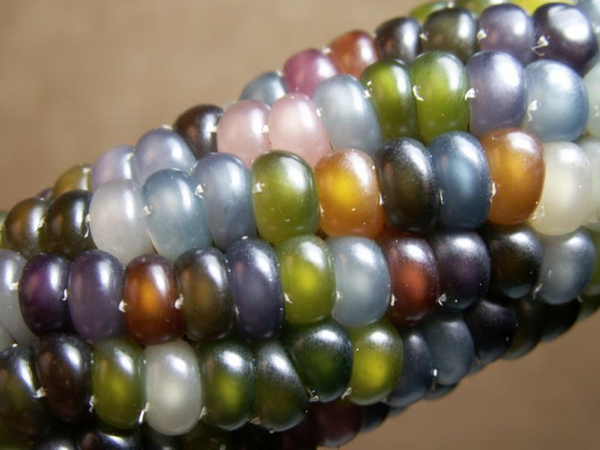Hello everyone! So glad to be back here posting again. I've been reading Anne's posts with enjoyment (and hunger), and while the work and stress of college final projects has kept me from cooking or doing much food-related activity, I did have a thought strike me the other day: that nature all by itself produces some seriously beautiful food.
Visuals are a big part of food, of course. Hyper-elegant presentation--both in what's on the plate and of the restaurant itself-- is more that a bit of what separates fine dining from more casual fare, but they by no means hold the monopoly. Every host cooking for a party who pauses to consider what plate would look best to arrange a dish on, or who adds a sprig of parsley or a stripe of sauce to a plate is engaging in the same activity. We eat in significant part with our eyes, and we draw immediate association between visual and gustatory pleasure--how many times have you been at a restaurant and, seeing the plate of a dining companion, said almost automatically "oh, that looks good!"
I think that often though, we tend to focus over-much on food visuals as something based entirely in the skill of the cook--an art of presentation. Such an art certainly exists, don't get me wrong. But in focusing entirely on how we can transform ingredients into something beautiful, we forget that many foods, in the right varieties, are beautiful, in ways that can be as striking and captivating as paintings or sculptures.
We aren't helped in this by supermarket produce aisles, which rely by-and-large on an industrial level of uniformity--row on row of intentional peppers, identical carrots, identical onions, each usually a single variety, often bred for reasons of convenience or transportability rather than flavor.
So, I'd like you do try something. Before you open the rest of this piece, I'd like you to visualize what each of the following four foods look like.
Eggplant
Radish
Broccoli
Corn.
Ready? Now go ahead.
All of these are real varieties of these vegetables. I'm not sure of the name of the eggplant cultivar, but the remaining ones are Watermelon Radish, Romanesco Broccoli (possibly familiar to any math geeks out there, as its spirals resemble the fibonacci sequence), and Glass Gem Corn. This last one is a tremendous example of the way food works today--a rare variety to begin with, it has dwindled into near-extinction but is now being preserved by Native Seed/SEARCH, a nonprofit from my hometown of Tucson who are dedicated to the preservation of Southwestern plant varieties.
Now, I've never tried any of these myself, so I can't speak as to how they taste. I do know, however, that a food world in which we have such lovely options to choose from is a more vibrant and more interesting one.
e-mail us: you can send your comments, recipes, or a personal message to Anne and Colin at: everything-tasty@annedesigns.com



I've had the Fibonacci broccoli, and it was quite tasty, and the watermelon radish is delicious. Don't know how the others taste, but you're right, they deserve to be celebrated for their beauty alone!
ReplyDelete